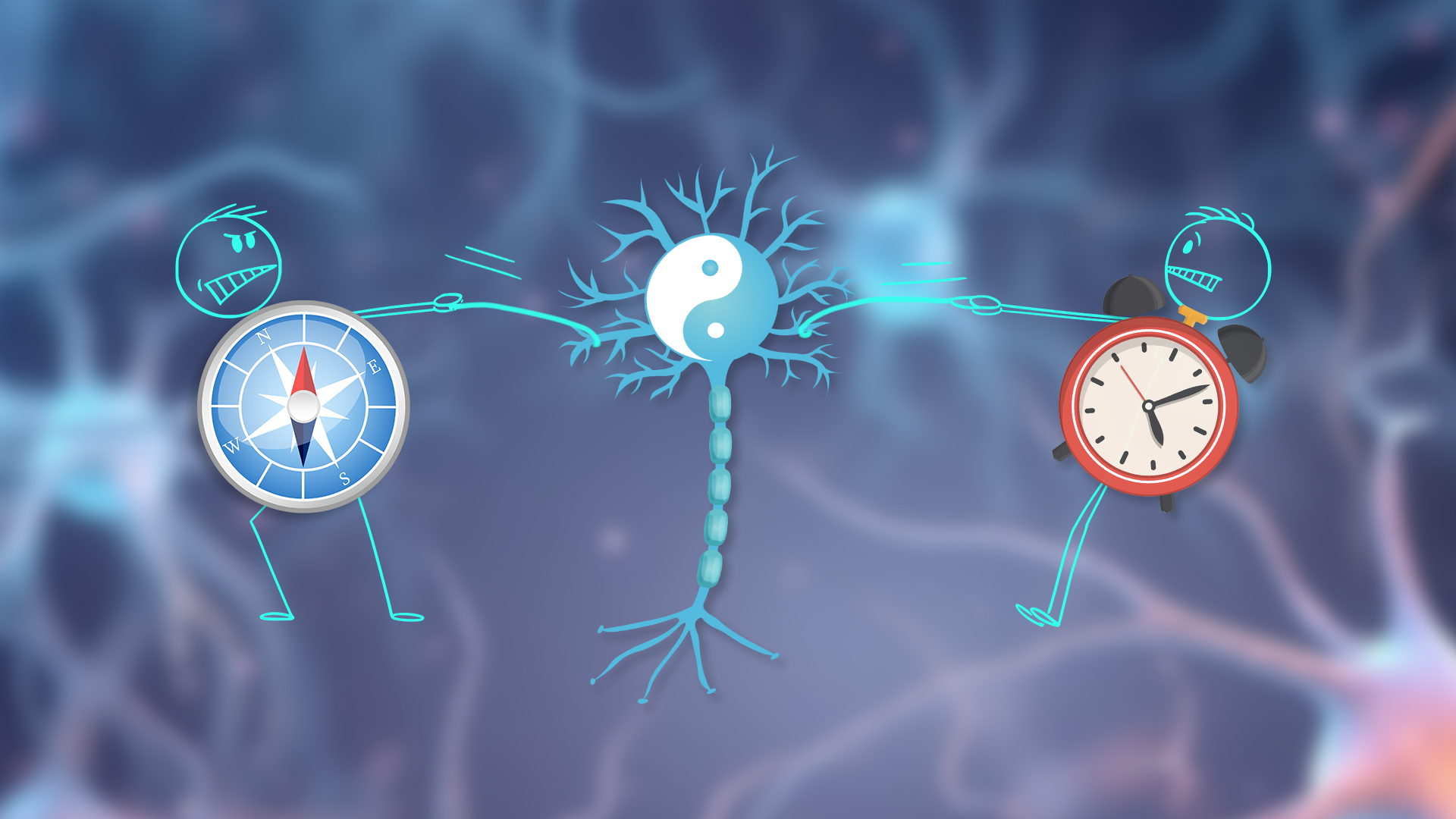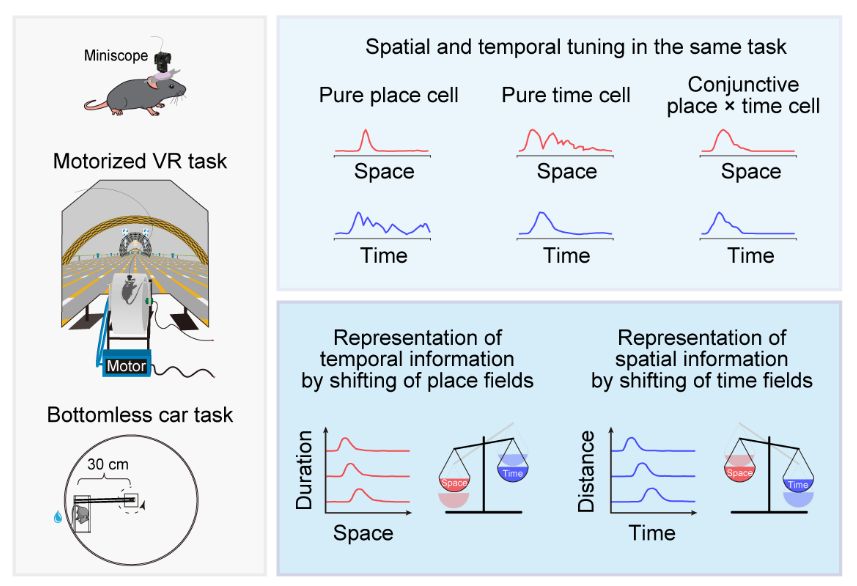Space and time are fundamental dimensions that organize episodic memory. Decades of research have identified the hippocampus as the brain’s critical region for memory, emphasizing its vital role in spatial and temporal cognition.
The hippocampus is crucial for episodic memory and has been demonstrated to encode spatial and temporal information. Previous studies have found that when an individual explores a spatial environment, hippocampal neurons selectively fire at specific locations, known as place cells. Similarly, in fixed-time experimental paradigms, hippocampal neurons selectively fire at specific moments, referred to as time cells. Place and time cells are responsible for encoding an individual’s memory of locations within the environment and specific time points, respectively. However, how spatial and temporal information interact and integrate to form the contextual background of our memories has long been an unsolved mystery in the field of neuroscience.

A research team led by Assistant Professor Xiaojing Chen from the School of Life Sciences at the Southern University of Science and Technology (SUSTech), in collaboration with Principal Investigator Cheng Wang from the Institute of Brain Cognition and Brain Diseases at the Shenzhen Institutes of Advanced Technology, Chinese Academy of Sciences, has published a study that reveals how the hippocampus, the brain’s central hub for memory, simultaneously processes and integrates spatial and temporal information. This work sheds new light on the formation of episodic memories, with the findings providing crucial insights into how the brain constructs spatial-temporal representations of experiences, which may lead to new strategies for addressing memory disorders.
Their paper, entitled “Integration and Competition Between Space and Time in the Hippocampus,” has been published in Neuron, an influential journal in the field of neuroscience.

Figure 1. Spatial and temporal representation of hippocampal neurons: integration and competition. In the same task, the spatial and temporal fields of hippocampal neurons are negatively correlated.
In this study, the research team designed various spatial-temporal navigation tasks while simultaneously recording the activity of hippocampal CA1 neurons in mice. They found that many CA1 neurons function as both place cells and time cells within the same task. This discovery challenges the traditional view that spatial and temporal information is processed independently.
More intriguingly, they uncovered a complex relationship between spatial and temporal representations, revealing a significant negative correlation between the spatial position represented by the neurons and the duration of the time experienced. In other words, as the experienced time increases, the spatial position represented by the neurons shifts toward the starting point of the environment. This correlation enhances the information content of both spatial and temporal dimensions.
The researchers further pointed out that this integrated encoding of space and time at the single-neuron level indicates that the hippocampus can create a dynamic and flexible neural map to adapt to constantly changing spatial-temporal contexts. This discovery not only deepens our understanding of how the brain processes continuous experiences, but also provides new ideas for developing intervention strategies for memory disorders.
The team found that the CA3 region plays a significant role in regulating the relationship between spatial and temporal encoding, suggesting the involvement of a more complex neural network in maintaining the balance between these encodings. They believe that the overall coordinated action of this neural network might explain why the hippocampus can flexibly respond to dynamic changes in time and space under different contexts.
This research not only brings new breakthroughs to the field of neuroscience, but also provides new directions for broader scientific research, especially in exploring how the brain processes continuous spatial-temporal experiences and developing specific therapies for memory-related diseases.
Ph.D. student Shijie Chen from Assistant Professor Xiaojing Chen’s laboratory and Assistant Investigator Ning Cheng from Principal Investigator Cheng Wang’s team are the co-first authors of this paper. Assistant Professor Xiaojing Chen and Principal Investigator Cheng Wang are the co-corresponding authors.
This work was supported by the National Natural Science Foundation of China (NSFC), National Science and Technology Innovation 2030 Major Projects, Guangdong Basic and Applied Basic Research Foundation, and the Shenzhen Key Laboratory of Precision Diagnosis and Treatment of Depression.
Paper link: https://www.cell.com/neuron/abstract/S0896-6273(24)00579-8
To read all stories about SUSTech science, subscribe to the monthly SUSTech Newsletter.
Proofread ByAdrian Cremin, Yingying XIA
Photo BySchool of Life Sciences